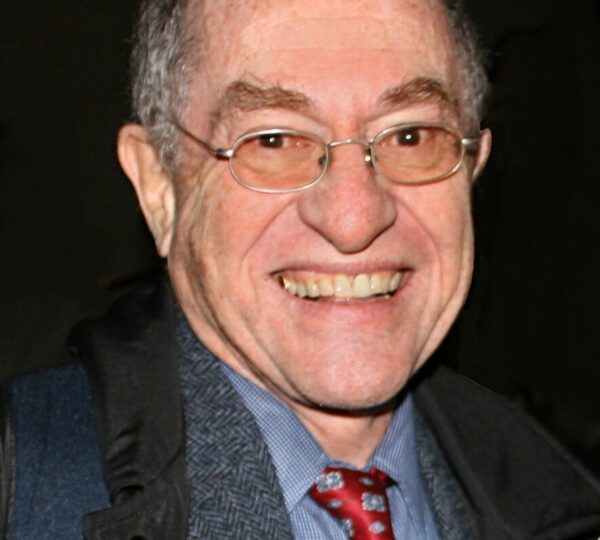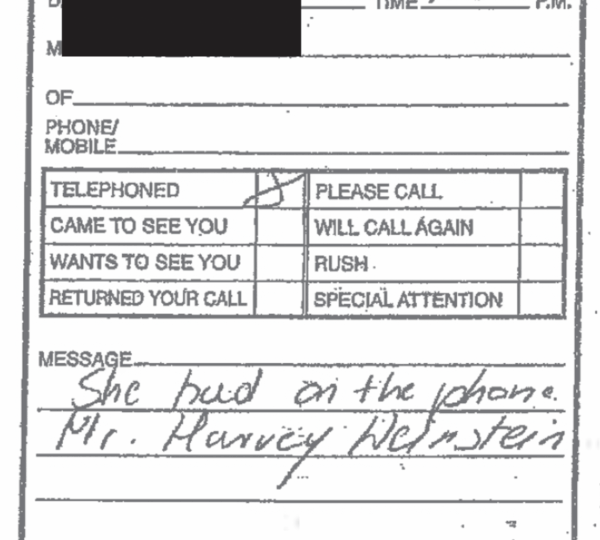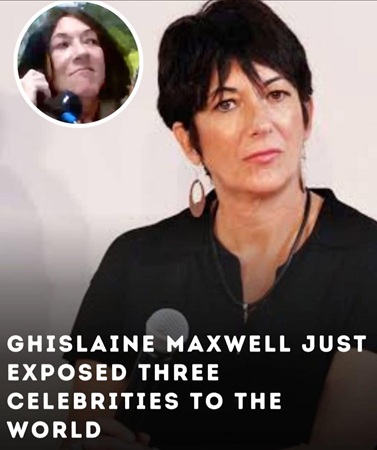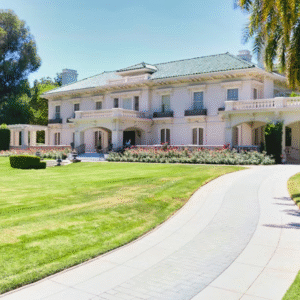Few criminal cases in modern American history have generated as much controversy, speculation, and public outrage as the saga involving Jeffrey Epstein.
Even after his death, the case continues to cast a long, ominous shadow over institutions ranging from law enforcement to the judiciary, from the political world to high-society circles.
Every few months, a new theory emerges, a new rumor spreads, or a new personality comes forward with a statement that reignites national debate.
But rarely does someone with direct knowledge of the case—someone who was personally involved in Epstein’s legal defense—step into the discussion and challenge the narratives that dominate the internet.
That is exactly what Alan Dershowitz, one of the most well-known defense attorneys in America, has recently done.
His comments have sparked strong reactions, confusion, and a renewed wave of controversy, because he did not simply defend his past role—he redirected the entire conversation surrounding the secrecy that still surrounds the Epstein files.
According to Dershowitz, many people looking in the wrong direction. The conspiracy theories circulating online, he believes, have been pointed toward the wrong set of institutions and the wrong set of individuals.

To understand why his statements landed like a political earthquake, one must first examine how the Epstein case came to be shrouded in so much secrecy—and why people believe there is a so-called “hidden client list.”
A Scandal That Never Stopped Growing
Jeffrey Epstein’s story is notorious: a wealthy financier with powerful connections, a decades-long trail of allegations, a controversial plea deal in 2008, a dramatic arrest in 2019, and a death that shocked the world.
The public has always believed that Epstein’s social circle—and his alleged network of high-profile associates—holds the key to understanding the full scale of the wrongdoing.
For years, people have imagined a highly protected list containing the names of politicians, celebrities, billionaires, and world leaders who may have been connected to Epstein in one way or another. The existence of such a list became an internet-wide obsession.
But Dershowitz insists that this narrative is built on misunderstanding rather than fact.
He argues that:
-
there is no official “client list,”
-
the remaining sealed documents are not kept secret by the government,
-
and the decisions about what remains private are being made by judges—not politicians or federal agencies.
His comments clash sharply with the popular theory that powerful political figures—including former presidents—might be controlling or suppressing the release of information. To Dershowitz, such ideas ignore how the legal system actually works.
Dershowitz Points to New York State Courts — Not the White House
One of the most surprising parts of Dershowitz’s remarks is his claim that New York state courts—specifically judges in Manhattan—are the ones preventing the release of certain names and documents. This was a revelation because public speculation has long focused on federal officials instead.
According to Dershowitz:
-
The documents that remain sealed are under the jurisdiction of New York state judges, not the federal government.
-
These judges ordered the redaction of names in FBI affidavits to protect the privacy of individuals involved in the investigation.
-
The redacted names do not represent a curated list of “clients,” but rather a collection of sensitive witness-related information collected through the investigative process.
-
As Epstein’s former attorney, Dershowitz says he is legally forbidden from disclosing anything he learned through privileged interactions.
This explanation directly contradicts many viral claims suggesting that political figures—especially former presidents—are intentionally hiding documents to protect themselves or their allies.
Dershowitz argues that these claims stem from misunderstanding how sealed court documents work. Judges—not presidents, not federal agencies—have the authority to unseal or maintain confidentiality over the materials.
It is a perspective that complicates the popular narrative, leaving many to question what is truly happening behind the scenes.
A Closer Look at the “Client List” Myth

The term “Epstein client list” has been used endlessly online, but Dershowitz states that this phrase is both inaccurate and misleading. According to him, no such list exists in the format people imagine.
Instead, the materials at the center of the secrecy are:
-
affidavits,
-
witness statements,
-
supporting investigative documents,
-
and records tied to victims,
many of which include names that courts have intentionally redacted to avoid harming individuals who were minors at the time or who requested privacy.
Dershowitz insists:
-
Most of the names linked to Epstein have already come out through journalism, undercover investigations, books, and civil lawsuits.
-
The remaining sealed portions are not likely to contain shocking new revelations, but rather sensitive information that could compromise victims or ongoing legal privacy protections.
This does not satisfy many people—especially those who believe Epstein’s connections run deeper than what has been revealed. But his explanation reframes the debate with legal clarity rather than speculation.
Federal Judges Reinforce the Secrecy — Not Out of Corruption, but Out of Law
Adding to the complexity, Dershowitz highlighted two significant judicial decisions made recently:
-
one by a federal judge in Florida, and
-
one by a federal judge in New York,
both of whom denied requests to unseal additional Epstein-related records, including grand jury transcripts from the 2000s.
These judges argued that releasing such records would violate:
-
long-standing confidentiality rules,
-
victim protection standards,
-
and federal laws governing grand jury secrecy.
These rulings were not influenced by political pressure but by strict legal requirements.
This is where Dershowitz believes the public misunderstanding grows strongest. The Epstein case is so emotionally charged and so politically explosive that many assume secrecy equals protection of powerful figures. But, from a legal standpoint, secrecy often equals protection of victims, particularly in cases involving sexual exploitation.
The Public’s Hunger for Answers vs. the Legal Duty of Privacy

The Epstein case continues to spark enormous public interest because the core questions remain unanswered:
-
Who knew what?
-
Who was involved?
-
Who enabled him?
-
Who visited his properties?
-
What names appear in sealed records?
The silence fuels speculation. But Dershowitz argues that the law, not conspiracy, is behind that silence.
The justice system must balance two opposing forces:
1. Transparency
The public wants to know the truth. Investigators want accountability. Journalists seek full disclosure.
2. Privacy
Victims deserve confidentiality.
Witnesses deserve protection.
Courts must follow strict federal rules.
This push-pull dynamic keeps the Epstein case alive in the national conversation, even years after Epstein’s death.
Why Dershowitz’s Comments Caused Such a Reaction
Dershowitz’s interview landed differently than most commentary for several reasons:
-
He was Epstein’s defense attorney and has firsthand knowledge.
-
He is legally constrained from revealing details, giving his statements weight but also limitation.
-
His claims contradict popular internet narratives blaming political figures.
-
He names judges—not politicians— as the ones holding the remaining files.
-
He challenges the idea that a bombshell “client list” is waiting to be released.
For supporters of transparency, his statements were frustrating. For critics of the justice system, they were suspicious. For legal experts, they were clarifying.
But for the public, they added a new complexity to an already tangled case.
A Case That Still Holds America’s Attention
Even now, years after Epstein’s death, the case remains one of the most intense topics of public fascination. Few criminal investigations have crossed as many social, political, legal, and cultural lines.
Epstein’s connections were global. His network was wide. His crimes were horrifying. His death raised questions. And because many documents remain sealed, curiosity has not faded—it has grown.
Dershowitz’s explanation does not end the debate. It simply introduces a new angle—one that forces people to reconsider who is truly controlling the flow of information and why the secrecy persists.
For now, the truth remains locked behind courtroom orders, judicial decisions, and confidentiality rules that may last for decades.
Only a handful of judges know exactly what is hidden, and they may be legally bound from releasing it for reasons more complex than the public realizes.
The Epstein case is not just a criminal investigation.
It has become a symbol — a symbol of public distrust, political polarization, institutional secrecy, and the belief that certain truths remain locked away from ordinary citizens. As Alan Dershowitz’s remarks reverberate through national media, they force the public to confront a difficult question:
Is the secrecy surrounding the Epstein records a cover-up — or a consequence of the justice system’s legal obligations?
This tension lies at the heart of the public’s frustration. And in many ways, the reaction to Dershowitz’s comments reveals even more about America’s state of mind than it does about Epstein himself.
To understand the full picture, we must look not only at what Dershowitz said, but at the deeper forces shaping this case — forces that have kept the documents sealed, the speculation alive, and the case permanently embedded in American culture.
The Two Competing Forces Behind the Secrecy
At the core of every debate about the Epstein files are two powerful and deeply conflicting principles:
1. The Public’s Right to Know
Millions of people believe transparency is the only way to uncover the full truth about Epstein’s network.
They argue that secrecy fuels conspiracy theories and destroys trust in government.
2. The Legal Obligation to Protect Victims and Witnesses
Judges, however, are bound by federal and state laws that require them to protect:
-
minors,
-
survivors of exploitation,
-
confidential sources,
-
and individuals not formally accused of crimes.
These two forces crash against each other, creating the storm that still surrounds the case today.
According to Dershowitz, the second force—not political manipulation—is the primary reason the files remain sealed.
But for many people, that answer only raises more questions.
Why the Courts Refuse to Unseal More Records
In recent years, two major rulings — one in Florida and one in New York — have rejected attempts to unseal certain Epstein-related materials. These rulings were made by federal judges who laid out their reasoning in careful, technical language.
The judges argued that releasing the sealed documents could:
• Identify minor survivors unintentionally
Some of the people mentioned in the records were underage at the time. Even redacted documents can reveal identities through contextual clues.
• Undermine confidentiality laws
Grand jury transcripts, for instance, are protected by some of the strongest secrecy rules in the American legal system.
• Reveal unproven or misleading allegations
Courts must avoid releasing raw investigative material that might unfairly damage individuals who were never charged.
• Violate the privacy of bystanders or incidental witnesses
Some people whose names appear in the documents may have had nothing to do with the crimes.
• Compromise the integrity of ongoing civil matters
Epstein’s network involved dozens of lawsuits and settlements, many still bound by confidentiality agreements.
In other words, the judges insist that the secrecy is not about protecting the rich or powerful — but about following the law.
Whether the public accepts that reasoning is another story entirely.
Why the Myth of the “Client List” Refuses to Die
Despite Dershowitz’s explanation, belief in a hidden list remains incredibly strong.
There are several reasons for this:
1. Epstein’s Elite Social Circle
Epstein’s known friendships with:
-
former presidents,
-
billionaires,
-
royalty,
-
Wall Street executives,
-
Hollywood personalities,
-
academics and scientists,
make it extremely easy for the public to believe something is being covered up.
2. The Unnatural Silence After His Death
Epstein died in federal custody under circumstances that triggered more suspicion than closure.
His death left many questions unanswered — and created a vacuum filled by speculation.
3. The Nature of His Crimes
Crimes involving money, power, and exploitation of minors almost always generate conspiracy theories.
The human mind gravitates toward narratives that explain large-scale wrongdoing with equally large-scale cover-ups.
4. The Internet’s Amplification
Social media rewards viral theories — and anything involving Epstein spreads rapidly.
5. A Trust Crisis in Institutions
A significant portion of the public believes that elites are protected from consequences.
The Epstein case, fairly or unfairly, reinforces this belief.
This combination ensures that the “client list” myth persists — even if the reality, as Dershowitz suggests, is far less dramatic.
Dershowitz’s Defense: A Complicated Figure in a Complicated Case
Alan Dershowitz himself is not a neutral figure in public opinion.
His name, reputation, and past personal battles make him polarizing.
Some people trust his expertise. Others mistrust him because of his connection to Epstein.
This complicates how the public receives his explanation.
But one thing is undeniable:
Dershowitz understands the law — especially the laws governing sealed records — more deeply than most commentators talking about the case.
When he says:
-
“There is no client list,”
-
“Judges ordered the redactions,”
-
“Most names are already public,”
-
“I am legally prohibited from discussing privileged matters,”
he is speaking not as an outsider, but as someone who has navigated the system from the inside.
Still, this does not satisfy everyone.
And it does not answer the underlying question haunting the public:
If the truth isn’t in a secret list… where is it?
To answer that, we must look not at a single document, but at the entire structure that keeps the remaining files sealed.
The Judges Who Hold the Keys
Right now, control over the remaining Epstein files rests with a very small number of judges. These judges operate under layers of legal obligations, including:
-
state privacy laws,
-
federal procedural rules,
-
grand jury confidentiality,
-
victim protection statutes,
-
civil settlement agreements,
-
and internal court orders dating back nearly 20 years.
In some cases, the judges may want to release the materials — but simply cannot, due to binding legal precedent.
In other cases, judges have explicitly stated that releasing the documents could harm innocent parties or retraumatize survivors.
This creates a paradox:
**The public demands transparency,
but the courts insist that privacy must prevail.**
As long as this tension exists, certain Epstein records may remain sealed indefinitely.
What Happens If the Files Remain Sealed Forever?
If the records stay sealed — and they may — several long-term consequences will shape the future of the Epstein story:
1. Speculation Will Never Stop
Secrecy is the oxygen of conspiracy theories.
Every unopened document becomes proof of corruption in the public imagination.
2. The Legacy of the Case Will Remain Unresolved
Without full disclosure, no official narrative can ever truly “close” the case.
3. Public Trust in Institutions Will Continue to Erode
Even if the judges acted purely out of legal obligation, the perception of a cover-up will endure.
4. Future whistleblowers may attempt to release information illegally
History shows that when institutions refuse transparency, leaks eventually surface — whether legally or not.
5. Victims may speak publicly on their own terms
Some already have. Others may choose to do so in the future, adding new layers to an already dense narrative.
No matter what happens next, one thing is certain:
The Epstein case will remain an open wound in American public consciousness for decades.
Why This Case Is Bigger Than Epstein
The Epstein story is not just about one man.
It is about:
-
power
-
access
-
accountability
-
secrecy
-
privilege
-
systemic failure
-
the limits of justice
-
and the vulnerability of victims
It exposes the uncomfortable truth that some crimes are so complex, so far-reaching, and so intertwined with political and social elites that the justice system struggles to handle them transparently.
Dershowitz’s comments — whether people accept them or not — show just how entangled the legal and public narratives have become.
The Public vs. The Courts: An Endless Standoff
In the end, we are left with two forces locked in permanent opposition:
-
A public demanding disclosure
-
A judiciary bound by confidentiality rules
Neither side is entirely wrong.
Both sides have valid concerns.
But their goals cannot be fully reconciled.
This means the Epstein case may never have the clean, complete resolution people are searching for.
And it means the debate sparked by Dershowitz’s remarks is only the beginning of a larger conversation — one that touches on the core of American justice.
Few criminal cases in modern American history have generated as much controversy, speculation, and public outrage as the saga involving Jeffrey Epstein.
Even after his death, the case continues to cast a long, ominous shadow over institutions ranging from law enforcement to the judiciary, from the political world to high-society circles.
Every few months, a new theory emerges, a new rumor spreads, or a new personality comes forward with a statement that reignites national debate.
But rarely does someone with direct knowledge of the case—someone who was personally involved in Epstein’s legal defense—step into the discussion and challenge the narratives that dominate the internet.
That is exactly what Alan Dershowitz, one of the most well-known defense attorneys in America, has recently done.
His comments have sparked strong reactions, confusion, and a renewed wave of controversy, because he did not simply defend his past role—he redirected the entire conversation surrounding the secrecy that still surrounds the Epstein files.
According to Dershowitz, many people looking in the wrong direction. The conspiracy theories circulating online, he believes, have been pointed toward the wrong set of institutions and the wrong set of individuals.

To understand why his statements landed like a political earthquake, one must first examine how the Epstein case came to be shrouded in so much secrecy—and why people believe there is a so-called “hidden client list.”
A Scandal That Never Stopped Growing
Jeffrey Epstein’s story is notorious: a wealthy financier with powerful connections, a decades-long trail of allegations, a controversial plea deal in 2008, a dramatic arrest in 2019, and a death that shocked the world.
The public has always believed that Epstein’s social circle—and his alleged network of high-profile associates—holds the key to understanding the full scale of the wrongdoing.
For years, people have imagined a highly protected list containing the names of politicians, celebrities, billionaires, and world leaders who may have been connected to Epstein in one way or another. The existence of such a list became an internet-wide obsession.
But Dershowitz insists that this narrative is built on misunderstanding rather than fact.
He argues that:
-
there is no official “client list,”
-
the remaining sealed documents are not kept secret by the government,
-
and the decisions about what remains private are being made by judges—not politicians or federal agencies.
His comments clash sharply with the popular theory that powerful political figures—including former presidents—might be controlling or suppressing the release of information. To Dershowitz, such ideas ignore how the legal system actually works.
Dershowitz Points to New York State Courts — Not the White House
One of the most surprising parts of Dershowitz’s remarks is his claim that New York state courts—specifically judges in Manhattan—are the ones preventing the release of certain names and documents. This was a revelation because public speculation has long focused on federal officials instead.
According to Dershowitz:
-
The documents that remain sealed are under the jurisdiction of New York state judges, not the federal government.
-
These judges ordered the redaction of names in FBI affidavits to protect the privacy of individuals involved in the investigation.
-
The redacted names do not represent a curated list of “clients,” but rather a collection of sensitive witness-related information collected through the investigative process.
-
As Epstein’s former attorney, Dershowitz says he is legally forbidden from disclosing anything he learned through privileged interactions.
This explanation directly contradicts many viral claims suggesting that political figures—especially former presidents—are intentionally hiding documents to protect themselves or their allies.
Dershowitz argues that these claims stem from misunderstanding how sealed court documents work. Judges—not presidents, not federal agencies—have the authority to unseal or maintain confidentiality over the materials.
It is a perspective that complicates the popular narrative, leaving many to question what is truly happening behind the scenes.
A Closer Look at the “Client List” Myth

The term “Epstein client list” has been used endlessly online, but Dershowitz states that this phrase is both inaccurate and misleading. According to him, no such list exists in the format people imagine.
Instead, the materials at the center of the secrecy are:
-
affidavits,
-
witness statements,
-
supporting investigative documents,
-
and records tied to victims,
many of which include names that courts have intentionally redacted to avoid harming individuals who were minors at the time or who requested privacy.
Dershowitz insists:
-
Most of the names linked to Epstein have already come out through journalism, undercover investigations, books, and civil lawsuits.
-
The remaining sealed portions are not likely to contain shocking new revelations, but rather sensitive information that could compromise victims or ongoing legal privacy protections.
This does not satisfy many people—especially those who believe Epstein’s connections run deeper than what has been revealed. But his explanation reframes the debate with legal clarity rather than speculation.
Federal Judges Reinforce the Secrecy — Not Out of Corruption, but Out of Law
Adding to the complexity, Dershowitz highlighted two significant judicial decisions made recently:
-
one by a federal judge in Florida, and
-
one by a federal judge in New York,
both of whom denied requests to unseal additional Epstein-related records, including grand jury transcripts from the 2000s.
These judges argued that releasing such records would violate:
-
long-standing confidentiality rules,
-
victim protection standards,
-
and federal laws governing grand jury secrecy.
These rulings were not influenced by political pressure but by strict legal requirements.
This is where Dershowitz believes the public misunderstanding grows strongest. The Epstein case is so emotionally charged and so politically explosive that many assume secrecy equals protection of powerful figures. But, from a legal standpoint, secrecy often equals protection of victims, particularly in cases involving sexual exploitation.
The Public’s Hunger for Answers vs. the Legal Duty of Privacy

The Epstein case continues to spark enormous public interest because the core questions remain unanswered:
-
Who knew what?
-
Who was involved?
-
Who enabled him?
-
Who visited his properties?
-
What names appear in sealed records?
The silence fuels speculation. But Dershowitz argues that the law, not conspiracy, is behind that silence.
The justice system must balance two opposing forces:
1. Transparency
The public wants to know the truth. Investigators want accountability. Journalists seek full disclosure.
2. Privacy
Victims deserve confidentiality.
Witnesses deserve protection.
Courts must follow strict federal rules.
This push-pull dynamic keeps the Epstein case alive in the national conversation, even years after Epstein’s death.
Why Dershowitz’s Comments Caused Such a Reaction
Dershowitz’s interview landed differently than most commentary for several reasons:
-
He was Epstein’s defense attorney and has firsthand knowledge.
-
He is legally constrained from revealing details, giving his statements weight but also limitation.
-
His claims contradict popular internet narratives blaming political figures.
-
He names judges—not politicians— as the ones holding the remaining files.
-
He challenges the idea that a bombshell “client list” is waiting to be released.
For supporters of transparency, his statements were frustrating. For critics of the justice system, they were suspicious. For legal experts, they were clarifying.
But for the public, they added a new complexity to an already tangled case.
A Case That Still Holds America’s Attention
Even now, years after Epstein’s death, the case remains one of the most intense topics of public fascination. Few criminal investigations have crossed as many social, political, legal, and cultural lines.
Epstein’s connections were global. His network was wide. His crimes were horrifying. His death raised questions. And because many documents remain sealed, curiosity has not faded—it has grown.
Dershowitz’s explanation does not end the debate. It simply introduces a new angle—one that forces people to reconsider who is truly controlling the flow of information and why the secrecy persists.
For now, the truth remains locked behind courtroom orders, judicial decisions, and confidentiality rules that may last for decades.
Only a handful of judges know exactly what is hidden, and they may be legally bound from releasing it for reasons more complex than the public realizes.
The Epstein case is not just a criminal investigation.
It has become a symbol — a symbol of public distrust, political polarization, institutional secrecy, and the belief that certain truths remain locked away from ordinary citizens. As Alan Dershowitz’s remarks reverberate through national media, they force the public to confront a difficult question:
Is the secrecy surrounding the Epstein records a cover-up — or a consequence of the justice system’s legal obligations?
This tension lies at the heart of the public’s frustration. And in many ways, the reaction to Dershowitz’s comments reveals even more about America’s state of mind than it does about Epstein himself.
To understand the full picture, we must look not only at what Dershowitz said, but at the deeper forces shaping this case — forces that have kept the documents sealed, the speculation alive, and the case permanently embedded in American culture.
The Two Competing Forces Behind the Secrecy
At the core of every debate about the Epstein files are two powerful and deeply conflicting principles:
1. The Public’s Right to Know
Millions of people believe transparency is the only way to uncover the full truth about Epstein’s network.
They argue that secrecy fuels conspiracy theories and destroys trust in government.
2. The Legal Obligation to Protect Victims and Witnesses
Judges, however, are bound by federal and state laws that require them to protect:
-
minors,
-
survivors of exploitation,
-
confidential sources,
-
and individuals not formally accused of crimes.
These two forces crash against each other, creating the storm that still surrounds the case today.
According to Dershowitz, the second force—not political manipulation—is the primary reason the files remain sealed.
But for many people, that answer only raises more questions.
Why the Courts Refuse to Unseal More Records
In recent years, two major rulings — one in Florida and one in New York — have rejected attempts to unseal certain Epstein-related materials. These rulings were made by federal judges who laid out their reasoning in careful, technical language.
The judges argued that releasing the sealed documents could:
• Identify minor survivors unintentionally
Some of the people mentioned in the records were underage at the time. Even redacted documents can reveal identities through contextual clues.
• Undermine confidentiality laws
Grand jury transcripts, for instance, are protected by some of the strongest secrecy rules in the American legal system.
• Reveal unproven or misleading allegations
Courts must avoid releasing raw investigative material that might unfairly damage individuals who were never charged.
• Violate the privacy of bystanders or incidental witnesses
Some people whose names appear in the documents may have had nothing to do with the crimes.
• Compromise the integrity of ongoing civil matters
Epstein’s network involved dozens of lawsuits and settlements, many still bound by confidentiality agreements.
In other words, the judges insist that the secrecy is not about protecting the rich or powerful — but about following the law.
Whether the public accepts that reasoning is another story entirely.
Why the Myth of the “Client List” Refuses to Die
Despite Dershowitz’s explanation, belief in a hidden list remains incredibly strong.
There are several reasons for this:
1. Epstein’s Elite Social Circle
Epstein’s known friendships with:
-
former presidents,
-
billionaires,
-
royalty,
-
Wall Street executives,
-
Hollywood personalities,
-
academics and scientists,
make it extremely easy for the public to believe something is being covered up.
2. The Unnatural Silence After His Death
Epstein died in federal custody under circumstances that triggered more suspicion than closure.
His death left many questions unanswered — and created a vacuum filled by speculation.
3. The Nature of His Crimes
Crimes involving money, power, and exploitation of minors almost always generate conspiracy theories.
The human mind gravitates toward narratives that explain large-scale wrongdoing with equally large-scale cover-ups.
4. The Internet’s Amplification
Social media rewards viral theories — and anything involving Epstein spreads rapidly.
5. A Trust Crisis in Institutions
A significant portion of the public believes that elites are protected from consequences.
The Epstein case, fairly or unfairly, reinforces this belief.
This combination ensures that the “client list” myth persists — even if the reality, as Dershowitz suggests, is far less dramatic.
Dershowitz’s Defense: A Complicated Figure in a Complicated Case
Alan Dershowitz himself is not a neutral figure in public opinion.
His name, reputation, and past personal battles make him polarizing.
Some people trust his expertise. Others mistrust him because of his connection to Epstein.
This complicates how the public receives his explanation.
But one thing is undeniable:
Dershowitz understands the law — especially the laws governing sealed records — more deeply than most commentators talking about the case.
When he says:
-
“There is no client list,”
-
“Judges ordered the redactions,”
-
“Most names are already public,”
-
“I am legally prohibited from discussing privileged matters,”
he is speaking not as an outsider, but as someone who has navigated the system from the inside.
Still, this does not satisfy everyone.
And it does not answer the underlying question haunting the public:
If the truth isn’t in a secret list… where is it?
To answer that, we must look not at a single document, but at the entire structure that keeps the remaining files sealed.
The Judges Who Hold the Keys
Right now, control over the remaining Epstein files rests with a very small number of judges. These judges operate under layers of legal obligations, including:
-
state privacy laws,
-
federal procedural rules,
-
grand jury confidentiality,
-
victim protection statutes,
-
civil settlement agreements,
-
and internal court orders dating back nearly 20 years.
In some cases, the judges may want to release the materials — but simply cannot, due to binding legal precedent.
In other cases, judges have explicitly stated that releasing the documents could harm innocent parties or retraumatize survivors.
This creates a paradox:
**The public demands transparency,
but the courts insist that privacy must prevail.**
As long as this tension exists, certain Epstein records may remain sealed indefinitely.
What Happens If the Files Remain Sealed Forever?
If the records stay sealed — and they may — several long-term consequences will shape the future of the Epstein story:
1. Speculation Will Never Stop
Secrecy is the oxygen of conspiracy theories.
Every unopened document becomes proof of corruption in the public imagination.
2. The Legacy of the Case Will Remain Unresolved
Without full disclosure, no official narrative can ever truly “close” the case.
3. Public Trust in Institutions Will Continue to Erode
Even if the judges acted purely out of legal obligation, the perception of a cover-up will endure.
4. Future whistleblowers may attempt to release information illegally
History shows that when institutions refuse transparency, leaks eventually surface — whether legally or not.
5. Victims may speak publicly on their own terms
Some already have. Others may choose to do so in the future, adding new layers to an already dense narrative.
No matter what happens next, one thing is certain:
The Epstein case will remain an open wound in American public consciousness for decades.
Why This Case Is Bigger Than Epstein
The Epstein story is not just about one man.
It is about:
-
power
-
access
-
accountability
-
secrecy
-
privilege
-
systemic failure
-
the limits of justice
-
and the vulnerability of victims
It exposes the uncomfortable truth that some crimes are so complex, so far-reaching, and so intertwined with political and social elites that the justice system struggles to handle them transparently.
Dershowitz’s comments — whether people accept them or not — show just how entangled the legal and public narratives have become.
The Public vs. The Courts: An Endless Standoff
In the end, we are left with two forces locked in permanent opposition:
-
A public demanding disclosure
-
A judiciary bound by confidentiality rules
Neither side is entirely wrong.
Both sides have valid concerns.
But their goals cannot be fully reconciled.
This means the Epstein case may never have the clean, complete resolution people are searching for.
And it means the debate sparked by Dershowitz’s remarks is only the beginning of a larger conversation — one that touches on the core of American justice.





